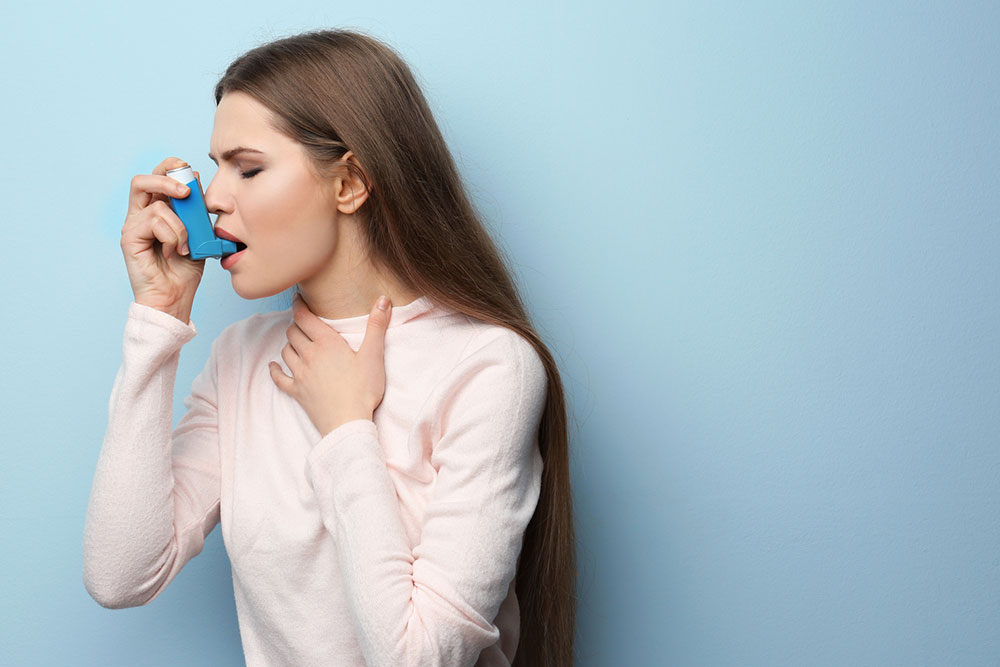Learning the symptoms and management of COPD

Chronic obstructive pulmonary disease, also known as COPD, is a term used by healthcare professionals to refer to a group of lung conditions, including emphysema and chronic bronchitis. Over time, COPD can cause patients to experience breathing difficulties. While one cannot reverse the lung damage, patients can make certain lifestyle changes to manage the condition and its associated symptoms. Continue reading to learn more about the symptoms and treatment alternatives of COPD.
Symptoms of COPD
Generally, the symptoms of COPD do not make an appearance until the condition has progressed significantly, leading to extensive lung damage. Furthermore, the continuation of certain poor habits can make the condition worse over time. Here are some of the signs of COPD mentioned below.
Tightness in the chest
One of the most common symptoms of COPD, chest tightness, can manifest in different ways across patients. While for some it can be noticed in the form of breathing difficulties, for others it can feel like a weight on the chest. This can increase the risk of pain while breathing. Some of the main causes of the issue are damage to lung’s air sacs, airway obstruction, respiratory infections, and bronchospasms.
Wheezing
This symptom of COPD is often accompanied by tightness in the chest. One of the best ways to differentiate wheezing from breathing difficulties is to look for a high-pitched whistling-like sound while inhaling or exhaling. Usually, this symptom is brought on by damage to the lungs and airways, where the body part swells and gets clogged by mucus. Some of the main reasons for this symptom are prolonged exposure to dust, polluted air, chemicals, and fumes.
Chronic cough
Another prevalent symptom associated with COPD is cough. Patients can experience a dry cough or cough accompanied by phlegm or sputum. In most cases of COPD, the cough is brought on by the inflammation and thickening of lung tissue. This means that instead of air flowing through the airways, it gets trapped, causing a reduction in oxygen levels and an inability to release carbon dioxide.
Shortness of breath
As mentioned previously, COPD causes immense damage to the lungs and airways. However, its impact on the body can differ depending on the severity of the condition. In the early and middle stages of the condition, the shortness of breath may only be noticed post-exertion. Then, as COPD progresses, patients may experience the symptom even while at rest.
In addition to the above symptoms of COPD, one can also look out for fatigue, frequent infections, blue-colored fingernails, and swelling in the ankles, legs, and feet.
Diagnosis and treatment of COPD
Diagnosis
Typically, while trying to diagnose COPD, doctors assess the patient’s lung functionality and overall health. This is done by inquiring about the patient’s overall health history and performing physical examinations and tests like lung function tests, chest X-rays, pulse oximetry, exercise testing, electrocardiograms (ECG), and CT scans.
Treatment
In the early and mid stages of COPD, one may be required to avoid prolonged exposure to dust, polluted air, and chemicals, among others. In cases where the condition has progressed, patients can be suggested therapy and other treatment alternatives mentioned below.
Supplemental oxygen
When COPD causes significant damage to the patient’s lungs, the individual’s body may not get an adequate amount of oxygen. In such cases, one may need portable oxygen cylinders to counter the effects of hypoxemia or low blood oxygen levels. The usage of oxygen therapy can depend on the severity of the patient’s condition. So, for some, oxygen can be required to continue daily activities or aid sleep, while others may need oxygen all the time. Hence, patients are advised to consult a doctor about their options and needs.
Pulmonary rehabilitation
COPD patients receive exercise training, nutritional advice, counseling, and education to manage the condition. This means patients must work with specialists to tailor the program according to their needs and end goals. This can prove beneficial for patients experiencing worsening symptoms, as they may be able to ensure reduced hospitalizations and increase one’s ability to continue daily activities. One must keep in mind that these special programs can require a referral from a certified healthcare professional.
Non-invasive ventilation therapy
According to research, non-invasive ventilation therapy, also called non-invasive ventilation (NIV), has shown promise in improving the survival rates in COPD patients. In most cases, this treatment alternative is utilized during hospitalizations, but one can even use the machine at home. Here, the patients are provided with a therapy machine and a mask to achieve two goals: improved breathing and reduced carbon dioxide retention. However, more research is needed in the area to determine the best mediums of this treatment alternative for COPD.
Surgery
Doctors can suggest surgery as a treatment alternative for patients with severe COPD, especially when other alternatives are ineffective. Some of the surgical options provided to patients are:
Lung transplant
The patient’s compromised lung (either one or both) is replaced by healthy ones.
Lung volume reduction
In this surgical option, doctors remove the damaged lung tissues to give way for the growth of healthy tissue. This encourages the diaphragm to work more efficiently.
Bullectomy
The doctor removes the bullae (air spaces in the lungs formed due to the compromise of air sacs) in this surgical procedure. This helps the patient by improving airflow and reducing breathing difficulties.
In addition to the above-mentioned treatment alternatives for COPD, one can take certain steps to slow down lung damage. These include controlled breathing techniques, clearing of the airways, consumption of healthy foods, and regular exercise. Further, patients are suggested to avoid exposure to polluted air and other irritants whenever possible.







